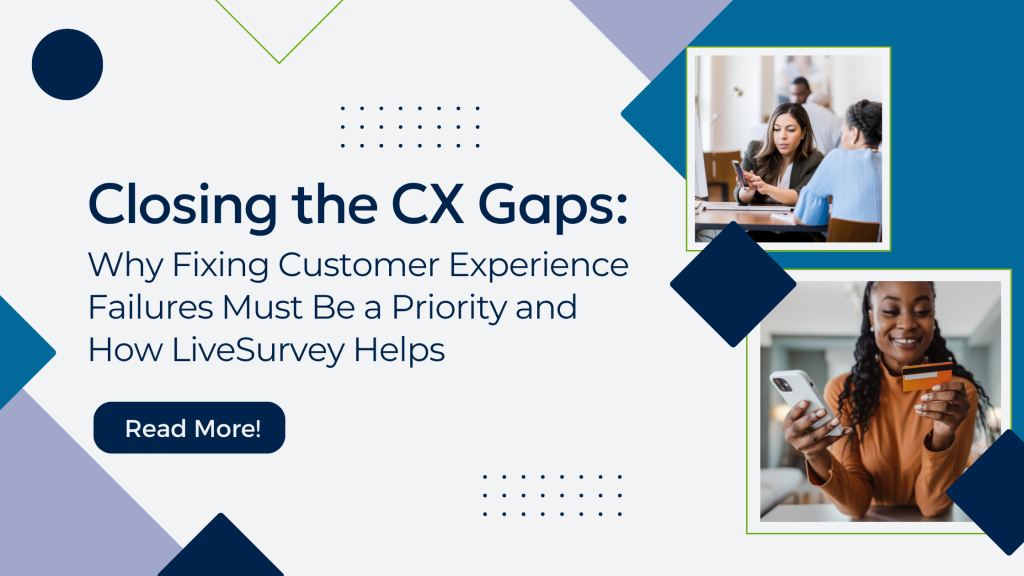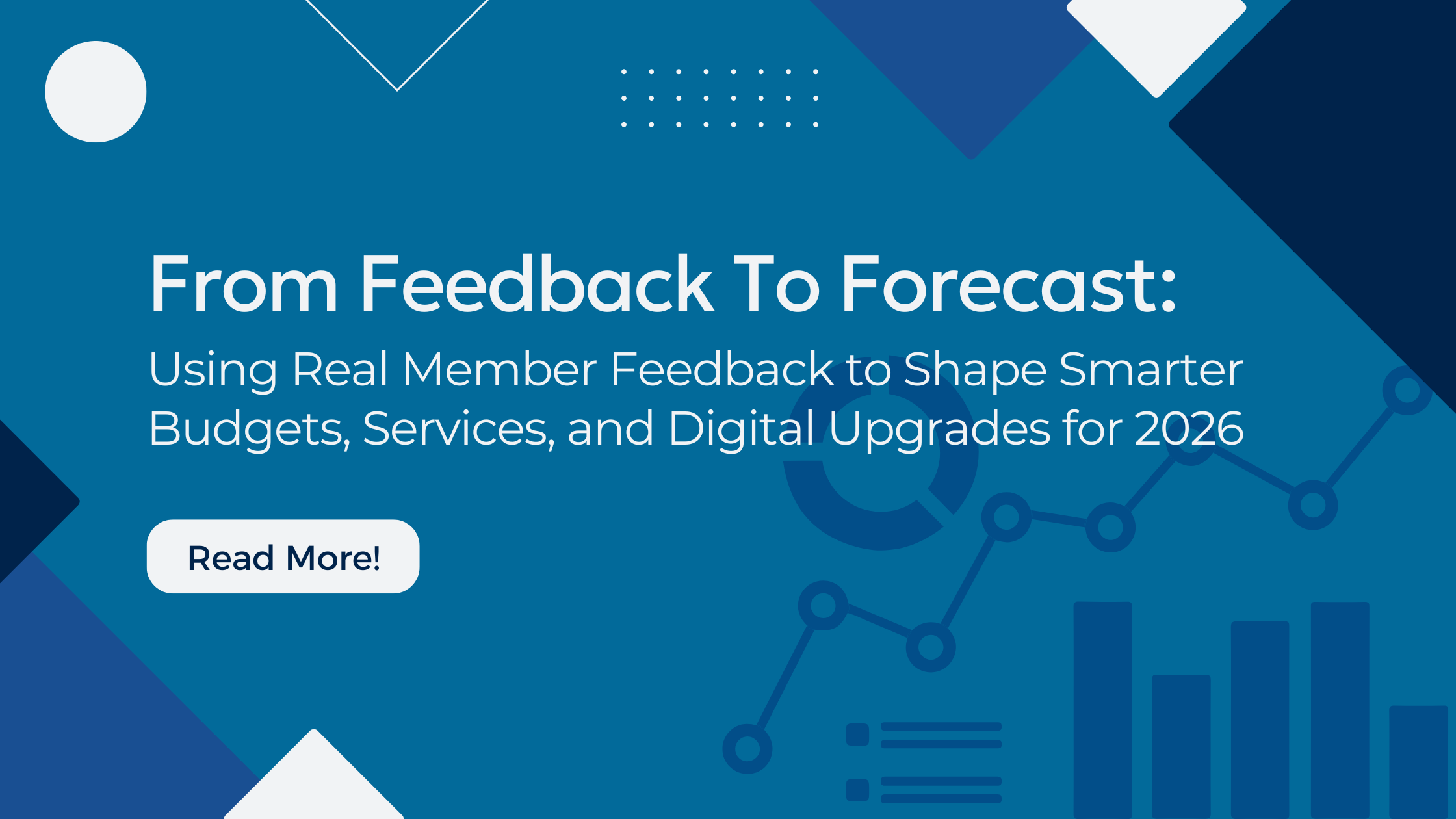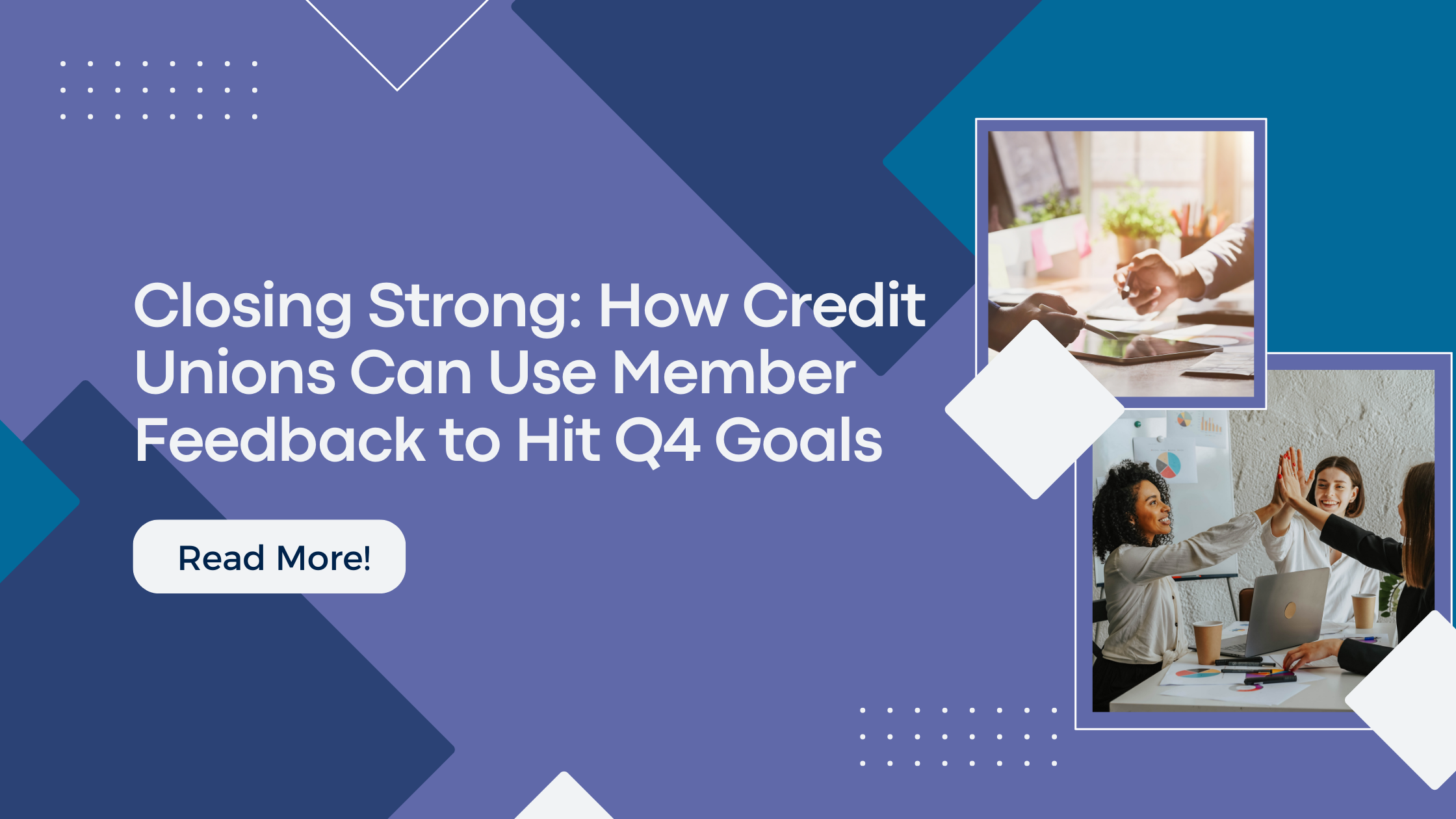Why LiveSurvey aligns perfectly with the five strategic fixes in the Amdocs report:
For banks and credit unions, customer experience (CX) has become a make-or-break factor in building trust, deepening relationships, and driving long-term loyalty. As financial institutions adapt to digital transformation, changing consumer behaviors, and rising service expectations, it’s clear that traditional approaches to CX are falling short.
A recent Amdocs “CX20” study uncovered five recurring CX gaps that continue to undermine efforts across industries. These aren’t minor missteps; they are systemic disconnects that hinder growth, weaken loyalty, and erode trust. Even more concerning, many of these gaps are widening, not narrowing, despite the attention they’ve received.
Let’s take a closer look at why these five gaps matter and how LiveSurvey can directly address each of the five critical CX gaps identified.
1. CX perception gap
Gap: 80% of leaders believe they deliver excellent CX, but only 24% of customers agree.
Why it matters: Leaders overwhelmingly believe their organization provides excellent customer experiences, yet customers often disagree. This mismatch leads to misinformed strategies, misplaced investments, and missed opportunities. If you’re working off assumptions instead of real data, you’re steering blind.
How LiveSurvey helps: By deploying real-time post-interaction surveys across channels (branches, mobile app, call center), LiveSurvey captures direct customer sentiment rather than relying on internal assumptions. These insights expose blind spots and ensure leadership isn’t relying on inflated self-perceptions.
2. Communication gap
Gap: 45% of leaders admit that messaging is unclear, and 43.5% highlight a lack of actionable customer feedback.
Why it matters: Whether it’s unclear messaging, inconsistent tone, or confusing instructions, poor communication erodes trust and frustrates customers. As banking increasingly moves to digital and omnichannel environments, ensuring consistency across every message becomes even more critical.
How LiveSurvey helps: Targeted micro‑surveys—sent after key interactions—can measure clarity, tone, and consistency of your communications. These pinpoint where messaging fails, enabling swift corrections and avoiding confusion that erodes trust.
3. Service gap
Gap: Issues like under-staffing or poor training lead to service quality falling below expectations.
Why it matters: Customers expect prompt, knowledgeable, and empathetic service, but staffing shortages and inadequate training often lead to dropped balls. The result? Long wait times, unhelpful interactions, and eroded loyalty.
How LiveSurvey helps: Capturing immediate feedback on service quality (e.g., “Was your advisor helpful?”) turns subjective complaints into quantifiable service KPIs. You can track performance by staff, location, or time, and trigger alerts where ratings dip—fueling focused training and operational improvements.
4. Personalization gap
Gap: Half of organizations lack personalization capabilities; generic experiences frustrate customers.
Why it matters: Customers no longer accept generic, one-size-fits-all experiences. They want to be seen, understood, and served in ways that reflect their specific needs. Failing to deliver that makes your brand feel transactional, not relational.
How LiveSurvey helps: Surveys can capture preferences, context, and usage details. With trigger-based logic (e.g., follow-up surveys for loan shoppers vs. savings account users), LiveSurvey reveals distinct personas and expectations, supporting the development of more tailored, meaningful experiences.
5. Feedback gap
Gap: While 83% see feedback as important, many fail to “close the loop” on issues.
Why it matters: Collecting feedback is only the first step; what matters most is acting on it. Too often, organizations fail to “close the loop,” leaving customers feeling unheard and undervalued. This not only wastes valuable data, but it also damages trust.
How LiveSurvey helps: LiveSurvey automates follow-ups: When negative feedback is detected, ticketing can be triggered instantly, and customers can be updated on resolution progress. This transparent “we heard you, here’s what we’re doing” approach rebuilds trust and demonstrates that feedback drives action.
Why LiveSurvey aligns perfectly with the five strategic fixes in the Amdocs report:
- Relentlessly reveal reality
LiveSurvey offers a continuous, unbiased feed of customer sentiment—unfiltered and comprehensive. - Treat CX as a mindset, not a project
Integrating surveys into every touchpoint (branch, digital, call center) embeds CX into daily operations, not siloed initiatives. - Find real gaps before choosing solutions
Instead of launching stand-alone digital tools, LiveSurvey helps pinpoint which service moments are underperforming so you can invest smartly. - Build emotional connection, not just transactions
Quick, meaningful surveys show customers “we care,” nurturing loyalty by emphasizing the relationship, not just sales. - Build what solves, not what sells
Voice‑of‑customer data ensures enhancements are rooted in genuine pain points, leading to features and service changes that customers truly value.
Bottom line
LiveSurvey gives banks and credit unions the tools to move from assumption to insight, revealing real customer pain points, refining communication, enhancing service delivery, enabling meaningful personalization, and closing feedback loops. That’s exactly what the CX20 study calls for: honest assessment, purposeful action, and CX-led transformation.
Let us know if you’d like to explore specific survey setups or see a demo of how it integrates into various channels! Contact us today!



